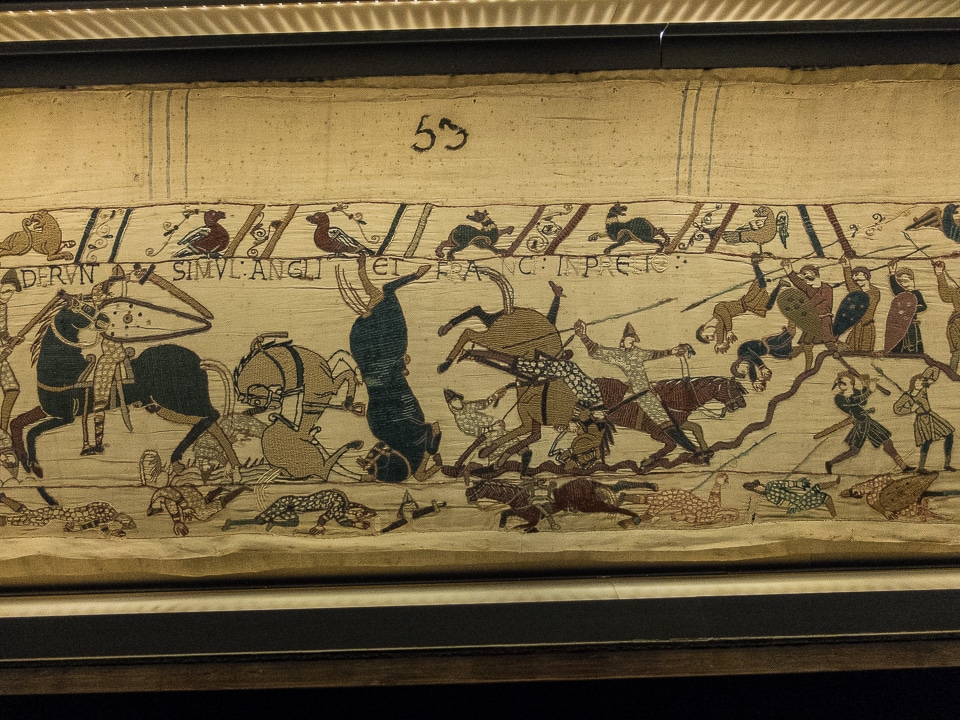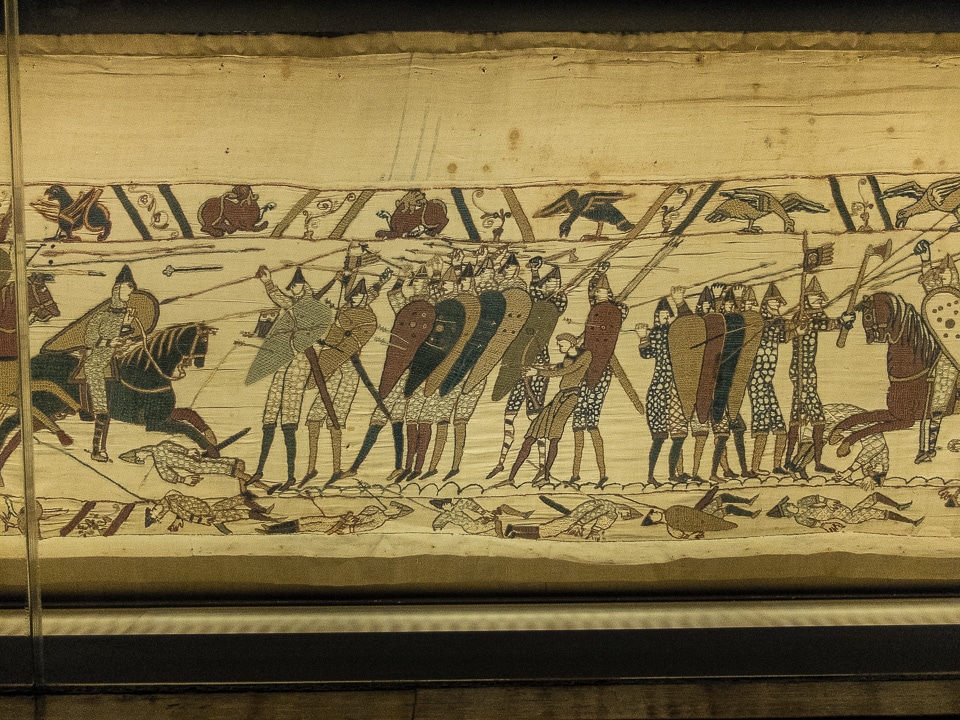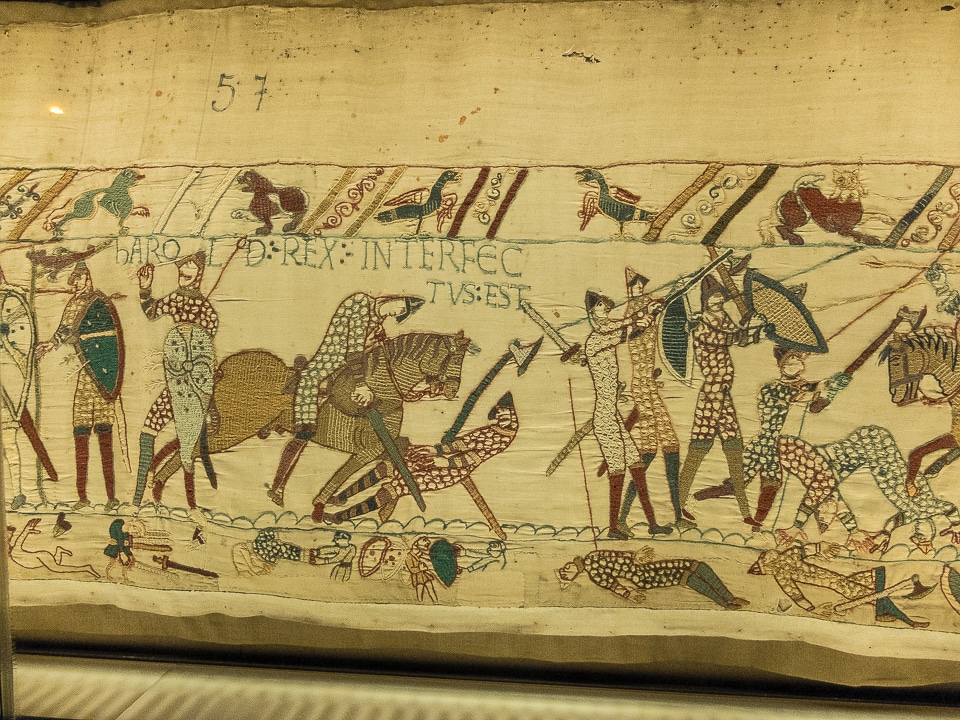
Normally as we plow through museums, churches, and castles, I take a cursory look at the tapestries, because, let's face it, they're just not as cool as paintings and sculpture and cannons and such. In fact, I'd rate them even behind reliquaries as points of interest. They don't even have the weird factor that makes reliquaries sort of interesting.
But the one exception that I've run across is the Bayeux Tapestry, which is housed in its own little museum in (surprise) Bayeux, France. This one is way cool. (So cool that I've visited the Tapestry twice, in fact.)
It's cool mostly because it really wasn't meant to hang decoratively on a wall in somebody's castle, never to be seen by the masses. The Bayeux Tapestry was the medieval equivalent of a newspaper, or at least a speech by a politician. It tells the story in pictures and words of the rationale and the history behind the Norman Conquest of England. In fact, William the Conquerer, the Norman duke who defeated the English King Harold at the Battle of Hastings and assumed the throne of England, had the thing done only a couple of years later so he could explain to everyone his side of what happened and how a French guy ended up as King of England.
If you took World History in high school, you probably know that already. If you can't remember back that far, just click on the Wikipedia links I'm adding here.
Or, if you can understand pictures (and Latin) you could get the whole story just like the folks did in 1070, just a few years after the battle. If you don't get the Latin, here's a list of the inscriptions, courtesy of Wikipedia.

The tapestry is 70 meters (230 feet long) and is displayed behind a glass case which snakes along a single room at the Bayeux Tapestry Museum. I'd highly advise getting the audio guide, which, if memory serves, is included in the €9 price of the ticket. Then they'll pretty much tell the story for you, although they don't actually translate the Latin. Of course, I made Kris back up and go through the whole thing again just so I could show off yet again my Latin skills.

In case you're wondering what Kris has to suffer through on almost a daily basis as we encounter Latin inscriptions, this one says HAROLD REX INTERFECTUS EST, which means “King Harold was killed.” It's interesting Latin, because the Romans had about a hundred ways to say “kill.” They were good at it and wanted to give the act its linguistic due, just like the Eskimos and their myriad ways to say snow, I suppose.
Up Your Travel Skills
Looking to book your next trip? Use these resources that are tried and tested by us. First, to get our best travel tips, sign up for our email newsletter. Then, be sure to start your reading with our Resources Page where we highlight all the great travel companies and products that we trust. Travel Accessories: Check out our list of all the accessories we carry to make getting there and being there a lot easier. Credit Cards: See our detailed post on how to choose the right travel rewards credit card for you. Flights: Start finding the very best flight deals by subscribing to Thrifty Traveler. Book your Hotel: Find the best prices on hotels with Booking.com. See all of the gear and books we like in one place on our Amazon shop.Got a comment on this post? Join the conversation on Facebook, Instagram, or Threads and share your thoughts!


Comments are closed.